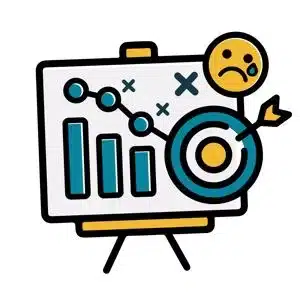The Power of Personal Development

Let’s get real: You’ve hired people at your credit union that didn’t work out. Some were never the right fit, while others lost something over time. I’m reminded of when one of our credit unions hired a marketing specialist. She was rather boastful about having earned a bachelor’s degree in marketing, and she was quick to point out to others at the credit union who did not have degrees. She created waves fast, and clearly hadn’t mastered what it takes to build and maintain great relationships. That’s not always taught in college. After seven months, she was fired. She continues trying to find herself, with short stints in car rentals, manufacturing sales, and now a nursing student. Now, sharing this story is not to belittle her. I am also not discounting her value as a person or the value of a quality education. I think she’s learned some valuable skills, albeit the hard way; however, what I am championing is the importance of personal development. What the former credit union marketing strategist didn’t see in her colleagues was just how much they had invested in themselves. Things like improving self-confidence, problem solving, stress management, emotional intelligence, time management, goal setting, and project management. This is a high performing credit union because it has an amazing team that values personal growth. Here’s the truth: What’s the one constant in our credit unions? Change. What’s not? Progress. So, when it comes to increased productivity, employee advancement, enhanced adaptability, and improving teamwork within your credit union, personal development must be at the forefront. Now, we’re not taking about BSA training. Nor are we talking about a book club, which often clashes with differing interests and mismatched expectations. Let’s take a closer look at six practical strategies to create a culture of learning: Personal Development Policy – Do you have one? If not, consider allocating funds for training programs, online courses, conferences, and workshops. Note Well: Don’t be that credit union that sends their leadership team to every conference under the sun, which becomes more like vacations. Invest in your team in other ways. With a personal development policy, you are showing you are committed to fostering a culture of learning. Encourage External Learning – Support employees who want to learn. Now, you may be saying to yourself, “We do that, and we get nothing.” You’re forgetting the “personal” in personal development. Truly get to know the individual. When you do, then you’ll know what direction to point them in, and they may even come to you with what areas they are passionate to learn about. Gamify Learning – When employees embark on tasks, solve problems, or acquire new skills, make it a competition. You can award points for achieving milestones or even create a leaderboard to show top performers. The key here is to make these opportunities challenging, enjoyable, and relevant to your credit union. Bite-Sized Learning – Examine videos, podcasts, and online modules that are easy to access and complete. While this shouldn’t be your only form of personal development, these often help you build momentum and promote positive reinforcement. Side Note for YMC clients: Staff have access to a Learning Resource Center, where credit union staff can learn skills in sales, productivity, leadership, and more. Offer Coaching/Mentoring – Senior employees can give new employees guidance and support. Sometimes, it pays to use an external mentor for an objective perspective and specialized development – especially if you are going through organizational change or restructuring. Onsite Staff Training – Having dedicated onsite staff training helps eliminate distractions and allows for interactive sessions with your credit union team. From technical skills to soft skills, leadership development, and team building activities, you can motivate and engage your team to a whole new level. Stepping out of one’s comfort zone can be intimidating, and we all give excuses: Lack of time, perception of being expensive, lack of support, fear of being overwhelmed, etc. Work with your team to identify priorities when it comes to personal development. I promise you, for most of your employees, they have strong aspirations and desires to be a better version of themselves. Start implementing strategies gradually and celebrate incremental successes. If you’re in a leadership position, having YOU championing personal development is critical to buy-in. Do it, and you will see individuals work toward being more skilled, engaged, and productive at your credit union. As Vice President of Brand Experience for Your Marketing Co., Frank Allgood works with credit unions to develop strong leaders, create effective training programs, and build powerful brands. Want to connect? Call 864.326.8740 or email frank@yourmarketingco.com.
Why your credit union marketing strategy is failing – or is It?

Oh, the frustration! An increased budget. An innovative strategy. Hopeful execution. And then… nothing. Sometimes, it results in denial, and other times, it results in doubling down on the failing strategy, hoping a little more elbow grease will make an impact. I see this often with credit union leaders who reach out about their marketing. It’s just not working! And yes, sometimes we even see this with our clients. After 15 years of perspective, I’ve found three common reasons for a failed marketing strategy. Perhaps one or all of these sound familiar to you? 1. Watching paint and boiling water. “Where are the new members?” “Where are the new loans?” Wait, this thing just launched two days ago! Much like you wouldn’t plant a seed and pull it up every few days to check the roots, you shouldn’t do that with your marketing. You implement an excellent credit union marketing strategy, and in no time, the post-mortems begin. You start tinkering with strategy (pulling up that seed to check the root), and then it becomes a certainty that nothing will grow. Sometimes, we DO get it wrong and need to fail fast and fail cheaply, but if you’ve done your homework, have a sound strategy, and are starting to see results, leave well enough alone. Wouldn’t you rather “fail” for six weeks and see success over the course of the year? 2. Right strategy. Wrong tactics. As mentioned above, strategy should be rooted in good, strong data. Perhaps your strategy is sound, but your tactics need to be revisited. Think back to 2011 when Netflix bungled its pricing change. Research analysts calculated that Netflix could have lost up to 30% of its recurring income because of the way it tried to split up its subscriber plans between DVD rentals and streaming downloads. Splitting the physical DVD rental business from the streaming download market made a lot of sense. The problem wasn’t with the strategy but with the not-so-well-thought-out tactics used (which, yes, the company did fix.) 3. The dogs don’t like the taste of your dog food. What?!? We’re a credit union! What does dog food have to do with anything? Stick with me. There’s an old story about a dog food company where sales were down, profits were down, income was down, and the people were down because of that. Marketing experts were called in. Every facet of marketing was considered and reworked. Packaging. Distribution. Ads. Then, nothing. Sales were still down. Because the problem was related to sales, they hired some sales trainers. The top sales trainers from across the nation were hired and paid big bucks to train the sales force in advanced sales strategies. At one of these sales meetings, a junior salesman raised his hand. The expert sales trainer called on him. “I know why sales are down.” “You?” questioned the sales trainer. “You know why sales are down?” “Yes. I know why sales are down.” “We have had the top consultants in the country working on this, and they couldn’t figure it out, and you, Junior John, know why sales are down.” “Yes, I know why sales are down.” “Well, tell us then! Why are sales down? Enlighten us!” “Dogs don’t like it.” “What?” “Dogs don’t like it.” “Excuse me? What do you mean dogs don’t like it?” “Dogs don’t like it.” “We have had some of the top scientists in the world developing this dog food formula. How can you criticize our dog food?” “Dogs don’t like it.” Why do your credit union marketing efforts seem to fall short? In our onboarding process with a new marketing client, we often find the real reason for stunted growth: Loan apps are clunky. Response times are too slow. Offerings are not relevant. The list can go on. Out of the many reasons your marketing may not be working, a common one is that members simply don’t like what you have to offer. For more than 15 years, we’ve been using a time-tested process to walk clients through achieving next-level growth opportunities before spending even one cent on marketing. Perhaps we can help you, too? If the answer is yes, let’s talk!
Our Credit Unions Aced 2023

Loan demand was strong last year. Deposits were elusive. But that’s not news to you. That was the overall story for most credit unions in 2023. For more than 10 years, we have collected and compiled quarterly call report data from our clients to look for trends and anticipate strategic shifts needed to remain competitive. Reviewing the data for last year, I’m not sure I could be more proud of what they’ve accomplished for their credit unions and their members. Here is what I found: 1. Loan demand was strong in 2023, averaging 8.86% for all YMC clients. That was down from 16.09% growth in 2022. With liquidity tightening and loan-to-share ratios on the rise, loan demand didn’t decrease in 2023; however, the ability to lend did. One positive trend among several clients was decreasing dependence on indirect lending and increasing focus on serving ideal members. That drove share-of-wallet up as well as yield on loans. 2. Our top five credit unions for loan growth ranged from 14.5% all the way up to 37.19%. The commonality among these five was their risk appetite. To ensure they manage risk appropriately, some of those credit unions work with TCT Risk to maintain safety barriers and ensure proper pricing for their loan portfolios. 3. Membership growth in 2023 was more robust than in 2022. Each quarter saw membership increase across all our clients, with Q4 being the highlight of the year. Our top five credit unions for membership growth ranged from 4.29% to more than 17%. These five diligently focused on educating and engaging with their respective ideal member. 4. Q4 2023 experienced the 11th straight increase in net worth among our credit unions as they continue to rebuild their strength after the COVID-19 crisis. Overall, 2023 was a spectacular year for Your Marketing Co. clients when it came to growth. Despite liquidity challenges, our clients were able to continue lending and serving their members well. Adjustments in our digital strategy and six-figure investments in technology upgrades and new software allowed us to gain deeper perspectives on our clients’ ideal members and reach them more effectively. We fulfilled our mission to help credit unions avoid unnecessary mergers by educating, engaging, and retaining the next generation of credit union members, and that remains our focus in 2024. Is your credit union ready to ace 2024? Contact Bo at Your Marketing Co. today!







